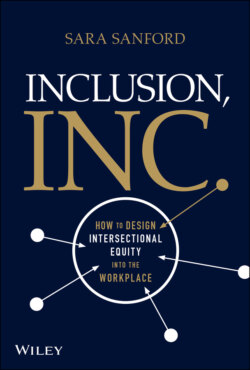Читать книгу Inclusion, Inc. - Sara Sanford - Страница 16
GEN Certification: Discovering the Equity Trim Tabs
ОглавлениеWhen Ford needed to improve quality in the 1980s, they plotted defect rates on charts that were visible to everyone in their factories. In today's automotive marketplace, Tesla has refocused the measurement spotlight on a new metric that matters: Delivery Performance—the percentage of fulfilled deliveries that meet the customer-promised delivery date. Any employee can log on to Tesla's KPI dashboard, at any time, to see the company's progress toward its 90 percent Delivery Performance goal. Digital dashboards that track business-critical function data provide a clear, quantifiable standard for employees to aspire to.
Employers, however, have never had such a measurable standard for equity in the US workplace. This has left them to take “best guesses” in an area that already feels fraught with complexity. Maybe moving networking events to work hours will get more women to participate, but without measurement, who knows? Maybe stating that leadership supports Black employees is enough to make them feel included, but without measurement, who knows?
Employees and employers both want clear benchmarks that go beyond good intentions. The LEED certification gave businesses this clarity around environmental stewardship by outlining the exact steps they need to take for certification. Our DEI-focused organization, GEN, wanted businesses to have this kind of playbook for workplace equity.
Seeing the impact other standards have made, we partnered with the University of Washington to create the first standardized certification for intersectional equity in US businesses: the GEN Certification.
Creating this certification meant finding the equity trim tabs. We found hundreds. We refer to them as “cultural levers” that can be adjusted to design bias out and equity in. Like the wall holder for the hotel key card, these simple redesigns take resistance out of the equation. As Fuller would say, we're “getting the low pressure to do things…getting rid of a little nonsense, getting rid of things that don't work and aren't true,” making it easier for everyone to make decisions based on merit, rather than bias.
Over years, we beta tested these cultural levers, certified companies, and tracked their progress. We found out what works and what doesn't. Those findings form the blueprint for this book.
